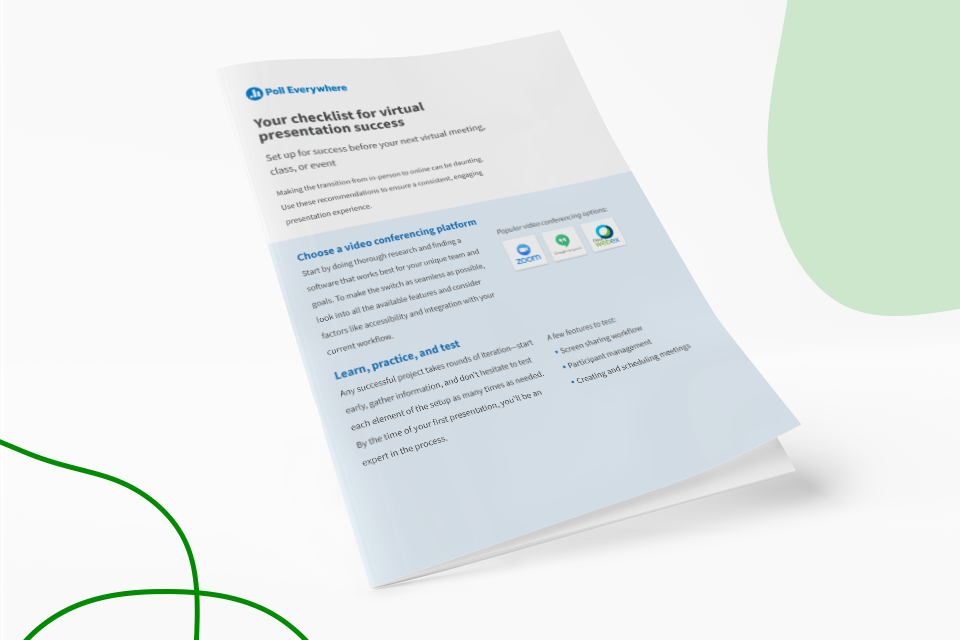Pre-flight Checklist
In-person presentations are already daunting, but virtual presentations are a whole new beast. With virtual presentations, you become your own AV technician—checking your Wi-Fi, updating your presentation software, and plugging in your mic. Preparing for a virtual presentation requires a setup ritual, and we’ve compiled a list of best practices for you to review before you present.

What makes a virtual presentation good?
A good virtual presentation is informative, concise, and engaging. Online meetings and presentations are already hard to follow, as audience members often lose interest or multitask. The best virtual presentations can maintain their audiences’ attention and provide value.
A strong virtual presentation should have the following components:
- A visual element – a slide deck, video, graphics, etc.
- Key takeaways – a quick summary of the main points for the audience to remember.
- Clear audio and visual – great virtual presenters have an HD camera and a high-quality microphone paired with a clean and distraction-free background.
- Audience engagement – Incorporating an interactive element into your virtual presentation will keep your audience engaged and connected.
How to make virtual presentations engaging?
Virtual presentations should be a two-way conversation between the presenter and the audience. Use an audience engagement tool like Poll Everywhere to incorporate interactive activities that the audience can seamlessly participate in.
Here are a couple of examples:
- Start with an icebreaker, such as a Word Cloud or a Clickable Image Activity, to ask how your audience is feeling before the presentation.
- Midpoint check-ins with a Q&A Activity to answer or clarify any questions your audience may have.
- Test their knowledge with a Multiple Choice poll and see if they are following your presentation and absorbing the material.
- Gather feedback with a Survey or an Open-Ended Question to better understand how you can improve your next virtual presentation.
